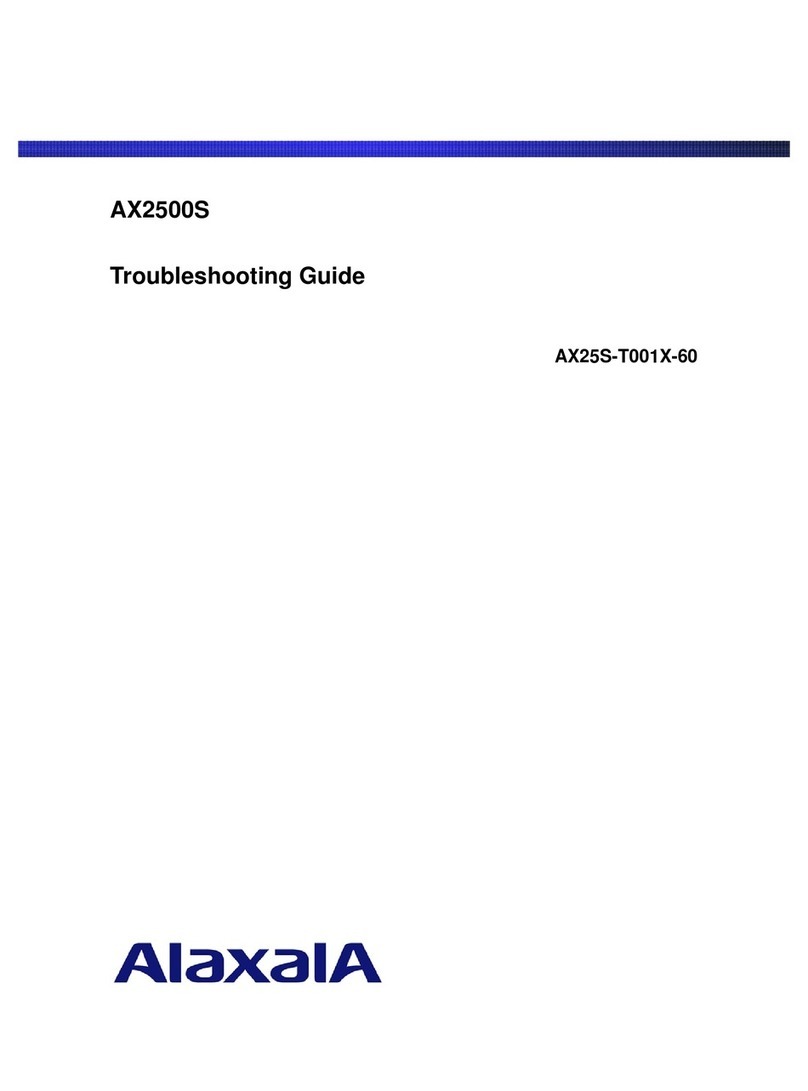Safety-4
Installing and carrying the main unit must be performed by trained personnel or a
professional carrier.
The maximum weight of the main units is as shown in the table below. Installing and carrying the main
unit must be performed by trained personnel or a professional carrier. If anyone other than those
mentioned above performs these tasks, the main unit might fall, resulting in serious injury.
Use a handling device such as a hand lifter when installing or carrying the main unit. Carrying the
main unit without using a handling device might cause the main unit to fall, resulting in serious injury.
Maximum weight of the main units
Model Weight
AX8616R 135kg
AX8632R 220kg
Handle power cables carefully.
Use a designated power cable, and keep the notes below in mind while using it. Incorrect usage of the
power cable might cause the copper wire to be exposed, a short circuit, or the wire to partially
break, resulting in electric shock or a fire.
- Do not place any objects on the cable.
- Do not pull on the cable.
- Do not apply excessive pressure to the
cable.
- Do not bend the cable.
- Do not twist the cable.
- Do not modify the cable.
- Do not place the cable near a
heat-generating apparatus.
- Do not heat the cable.
- Do not bundle the cables.
- Do not fix the cable by using staples or in
any other similar manner.
- Do not use a damaged cable.
- Do not continuously expose the cable to ultraviolet
rays or strong visible rays of light.
- Do not expose the cable to alkali, acids, oils, or
humidity.
- Do not use the cable in a high-temperature
environment.
- Use the cable within the rated range.
- Do not use the cable for other devices.
- Hold the plug when unplugging the power cable.
- Do not touch the power plug with a wet hand.
Do not cover the power cable. If the power cable is covered by a carpet, it is easy to forget that the
cable is there and to place something heavy on it.
Do not place anything near the outlet so that you can easily unplug the power cable when necessary.
Be aware of connection failures or arc tracking in the power plug.
Follow the instructions described below. If you do not follow these instructions, the power plug might
cause overheating because of arc tracking or a connection failure, resulting in a fire.
Insert the power plug completely so that the prongs are not exposed.
Make sure that the power plug is free of dust or water drops before inserting it. If there is any dust or
water on the plug, wipe it off before you insert the plug in the outlet.
Make sure that the outlet is not loose when you insert the power plug.
Construction on the outlet must be performed by a technician with the appropriate knowledge.
Safety Information (continued)
WARNING




























